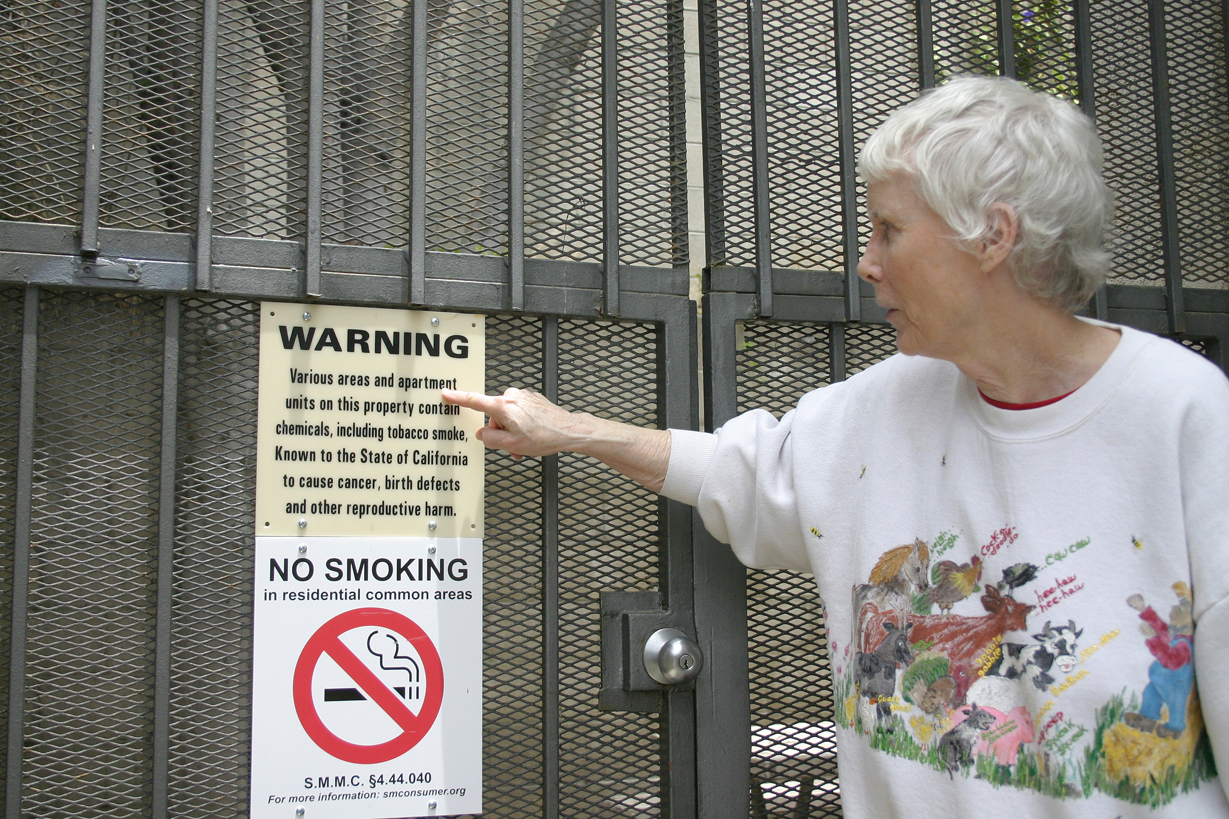
CITYWIDE — Deadlines for compliance with a new law that restricts smoking in apartments and condos are fast approaching, and current Santa Monica tenants should prepare themselves to answer an age-old question: Smoking or non-smoking?
Landlords and condo homeowners' associations have to get the ball rolling on their official resident surveys by Jan. 21, 2013, according to a release by Adam Radinsky, the head city attorney in the Consumer Protection Unit, the group responsible for the new regulations.
The survey will give residents the opportunity to declare their units "smoking" or "non-smoking," and responses must be in by Feb. 20, 2013.
A month later, owners have to give their tenants a rundown of the results. Tenants then have until April 21 to make any corrections or changes.
By May 21, the final list must be given to everyone in the building, as well as City Hall.
If, for whatever reason, a tenant chooses not to respond, their unit defaults to "smoking." New tenants, however, are out of luck — any person who moved into an apartment or condominium in Santa Monica after Nov. 22 lost the right to smoke in their unit.
That covers cigarette smoke and medical marijuana, unless a doctor specifically requests that a disabled occupant smoke the marijuana indoors and the person can't take the drug any other way.
If the property is already smoke-free, landlords do not have to conduct the survey, according to the City Attorney's Office.
Although the new regulations do not eliminate smoking in apartments, it's a step in the right direction meant to protect the health and safety of apartment dwellers in Santa Monica, said Esther Schiller, director of the Smokefree Apartment House Registry, a nonprofit that helps connect people with non-smoking complexes.
"For the first time in Santa Monica, apartment and condo residents will not have to worry that someone who smokes 24/7 in their unit will move in next door or under or over them," Schiller said.
Santa Monica banned cigarette smoking in common areas in 2010. That term covers all indoor and outdoor locations accessible to occupants of more than one unit and all outdoor locations within 25 feet of a door, window or vent, including most balconies and patios.
Property owners and homeowners' associations must post at least one conspicuous sign in the common area notifying people of the ban.
According to the National Cancer Institute, secondhand smoke contains at least 69 chemicals known to cause cancer in humans. The substance has the ability to seep through walls, electrical sockets and air ducts, and can ultimately impact those who choose not to light up of their own accord.
According to the Centers for Disease Control, "there is no risk-free level of exposure to secondhand smoke," and the smoke can cause asthma, respiratory infections, ear infections and sudden infant death syndrome, or SIDS.
Roughly 46,000 nonsmokers die each year from heart disease caused by secondhand smoke, according to the government fact sheet.
The drastic health impacts of secondhand smoke was one of the driving motivations of the City Council, which passed the measure on a 5 to 2 vote, with Councilmembers Kevin McKeown and Pam O'Connor against.
They objected on the basis of civil liberties, noting that cigarettes are still legal and that demanding that smokers "out" themselves in a survey was tantamount to tacking "a big, yellow ‘S'" on smokers' doors, in McKeown's words.
Councilmembers Bob Holbrook and Bobby Shriver, however, pushed for a more restrictive ban that would make all units non-smoking unless the tenant specifically opted out.
They eventually changed their votes after several rounds of motions floated up and failed on Oct. 3, but the support was tepid.
"We will have a new council in a month or so, and perhaps at that time we can do something more objective," Holbrook said at the time.
ashley@www.smdp.com









